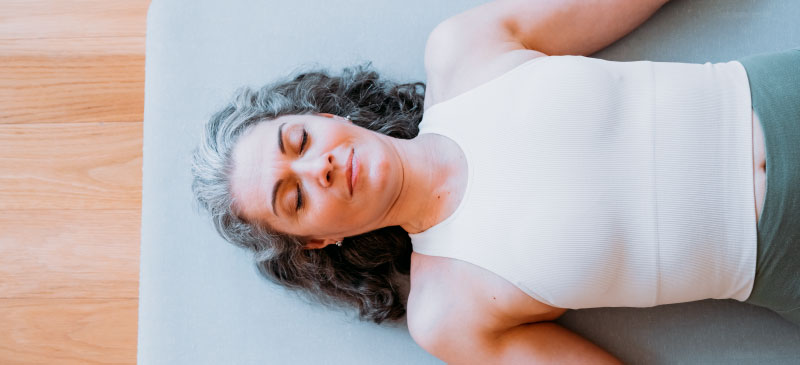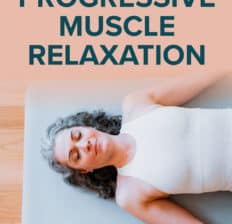This Dr. Axe content is medically reviewed or fact checked to ensure factually accurate information.
With strict editorial sourcing guidelines, we only link to academic research institutions, reputable media sites and, when research is available, medically peer-reviewed studies. Note that the numbers in parentheses (1, 2, etc.) are clickable links to these studies.
The information in our articles is NOT intended to replace a one-on-one relationship with a qualified health care professional and is not intended as medical advice.
This article is based on scientific evidence, written by experts and fact checked by our trained editorial staff. Note that the numbers in parentheses (1, 2, etc.) are clickable links to medically peer-reviewed studies.
Our team includes licensed nutritionists and dietitians, certified health education specialists, as well as certified strength and conditioning specialists, personal trainers and corrective exercise specialists. Our team aims to be not only thorough with its research, but also objective and unbiased.
The information in our articles is NOT intended to replace a one-on-one relationship with a qualified health care professional and is not intended as medical advice.
How to Practice Progressive Muscle Relaxation for Stress & Pain Relief
June 14, 2023

If you’ve been going through a tough time and find it hard to relax, a therapist or your doctor may have suggested you try a technique called progressive muscle relaxation (PMR).
The idea behind PMR is that a physically relaxed body cannot feel very anxious. Similar to deep breathing exercises and meditation practices, PMR is a natural way to calm the body and cope with the effects of stressful thoughts and feelings.
What Is Progressive Muscle Relaxation?
Progressive muscle relaxation is a calming practice that involves tensing or tightening certain muscles and then purposefully relaxing them.
The goal of this “mind-body technique” is to release muscular tension that is often associated with stress. Not only can tension in the body contribute to aches and pains, but it can also create a vicious cycle by worsening feelings of stress.
What is progressive muscle relaxation used for? Most often it’s recommended for people dealing with:
- symptoms tied to chronic stress
- anxiety symptoms
- insomnia and other sleep issues
- migraines and tension headaches
- gastrointestinal issues
- cardiovascular issues made worse by stress
- various types of chronic pain, including neck and back pain
- seizure symptoms thought to be triggered to stress
As a therapeutic technique, PMR was first developed by an American physician named Edmund Jacobson in the early 1900s. This is why it’s also sometimes called Jacobson’s relaxation technique.
Jacobson believed that muscle relaxation reduced anxiety and that physically relaxing the body led to a calmer mind.
Is progressive muscle relaxation the same as mindfulness? The two have some similarities but are overall different.
Mindfulness is a mind-body practice that involves bringing your awareness to the present moment, often by focusing on the breath and physical sensations in the body. It’s considered a form of self-regulating and is intended to happen with an attitude of openness, acceptance and curiosity.
PMR focuses more on relaxing muscles rather than keeping awareness on the breath or another focal point. Studies show that both can lead to increased relaxation.
Benefits
1. Helps Combat Stress and Decreases “Fight or Flight” Response
Eliciting a “relaxation response” using PMR counters the body’s “fight or flight” stress response and can help manage symptoms tied to chronic stress and anxiety. Studies have shown that this technique can lead to reduced symptoms tied to:
- generalized anxiety
- phobias, such as autophobia
- panic attacks
- lack of concentration
- loss of sense of control
- poor self-esteem
- stress brought on during pregnancy and postpartum
PMR works by promoting activity of the parasympathetic nervous system (PNS). The PNS has the opposite effects of the sympathetic nervous system, which is responsible for feelings associated with stress.
The PNS is often referred to as the “rest and digest” system because it reduces the body’s stress response, also known as the fight or flight response.
This means that activation of the PNS can be used to counteract symptoms tied to a heightened stress response, including:
- headaches
- digestive issues
- high blood pressure and other cardiac issues
- insomnia
- seizures
- pain
One way in which activation of the PNS benefits the body is by controlling release of “stress hormones” (glucocorticoids, such as cortisol and adrenaline) that have effects on many bodily functions, including blood pressure, blood sugar levels, heart rate and blood flow to skeletal muscles.
A number of studies have found positive effects on perceived levels of anxiety, depression and quality of life in patients with cardiac issues, such as pulmonary arterial hypertension, and even cancer after practicing PMR.
2. Can Help Manage Pain
Studies have found that, following PMR treatments, individuals typically report decreased levels of stress, tension and pain. Like meditation and breathing exercises, PMR has been shown to improve health outcomes by offsetting the negative health effects of chronic stress, including increased inflammation, and reducing symptoms of stress-related health problems.
3. May Help Improve Sleep
Because it’s a relaxation technique, PMR has been shown to lead to improvements in mood, stress, pain and general well-being, and therefore it’s not surprising that it can also make it easier to sleep. By calming a racing mind and reducing physical pain, this mind-body practice is beneficial for making people feel calmer and sleepier.
One study found that practicing PMR daily over the course of six weeks decreased patients’ fatigue levels and improved their sleep quality, and this difference was observed to be statistically significant.
How to Do It
How do you do progressive muscle relaxation? If you’re new to this practice it can be helpful to listen to a progressive muscle relaxation script, which you can find on YouTube, through online programs or in recordings available at your local library.
If you prefer to practice PMR without a script, follow these basic steps to get started:
- First find a place to practice that is quiet and comfortable and where you won’t be distracted. You can practice either laying down or sitting in a comfortable chair.
- During progressive muscle relaxation, you focus on tensing one group of muscles as you breathe in and then relaxing those muscles as you breathe out. Most experts recommend that you follow a specific order as you move through different muscle groups.
- Start with the lower extremities, and end with the face, abdomen and chest.
- Inhale and tighten/contract one muscle group while you hold for five to 10 seconds. Breath out/exhale and release the tension in that muscle group.
- In between breaths, try to relax for about 1o seconds before continuing to the next muscle group. Slowly work your way through all muscle groups so your entire body feels softer and calmer.
- Notice how your muscles and body feel differently while releasing tension. You can also focus on taking deep, slow breaths and may choose to use visualization and imagery to make the practice more effective.
To help you relax different muscle groups, University of Michigan Medicine recommends using these techniques:
- Hands: Clench them.
- Wrists and forearms: Extend them, and bend your hands back at the wrist.
- Biceps and upper arms: Clench your hands into fists, bend your arms at the elbows and flex your biceps.
- Shoulders: Shrug them. (Raise toward your ears.)
- Forehead: Wrinkle it into a deep frown.
- Around the eyes and bridge of the nose: Close your eyes as tightly as you can. (Remove contact lenses before you start the exercise.)
- Cheeks and jaws: Smile as widely as you can.
- Around the mouth: Press your lips together tightly.
- Back of the neck: Press the back of your head against the floor or chair.
- Front of the neck: Touch your chin to your chest.
- Chest: Take a deep breath, and hold it for four to 10 seconds.
- Back: Arch your back up and away from the floor or chair.
- Stomach: Suck it into a tight knot. (Check your chest and stomach for tension.)
- Hips and buttocks: Press your buttocks together tightly.
- Thighs and lower legs: Clench them hard and point your toes downward.
How often should you do progressive muscle relaxation?
Ideally you should practice every day or most days of the week. It only takes about 10 to 20 minutes per day to see results in most cases.
For an even bigger impact, you can choose to combine progressive muscle relaxation with other mind-body and therapeutic approaches, such as diaphragmatic breathing (deep breathing technique that uses the diaphragm, a large, dome-shaped muscle located at base of the chest and lungs that helps control the breath) and systematic desensitization (a form of behavior therapy in which counterconditioning is used to reduce anxiety associated with a particular stimulus).
Like PMR, there’s evidence showing that practicing slow, controlled breath work can help mitigate symptoms tied to chronic stress and anxiety — such as muscular tension and chronic pain, trouble sleeping, high blood pressure, etc.
Counterconditioning, used in systematic desensitization, refers to changing someone’s mood through positive pairings and associations. PMR is used during systematic desensitization treatments because it helps the body remain calm while someone works on removing a fear response associated with a phobia.
Risks and Side Effects
PMR is a “non-pharmacological method” of promoting relaxation and is generally thought to be very safe, considering it’s noninvasive and requires nothing but your own body. However, in some cases it can trigger anxiety in certain people who have trouble controlling their emotions.
If you find that this practice makes you feel uncomfortable or leads to panic, consider trying another approach instead or working with a professional therapist as you get started.
Also be sure not to aggravate physical pain if you’re currently injured and healing. Pay attention to how your body feels after the practice, and consider avoiding certain types of stretches if they worsen symptoms.
Conclusion
- Progressive muscle relaxation is a technique that involves intentionally tensing and releasing various muscles groups to generate feelings of tension release and relaxation.
- Benefits of PMR include reducing stress, anxiety, headaches, pain, high blood pressure, digestive issues and insomnia.
- You can practice anywhere by laying down or sitting while you focus on one muscle group at a time.
- If you’re new to this practice, it can be helpful to listen to a progressive muscle relaxation script, watch a video online or work with a professional. You can also combine PMR with other mind-body practices, such as deep breathing, meditation and systematic desensitization.











